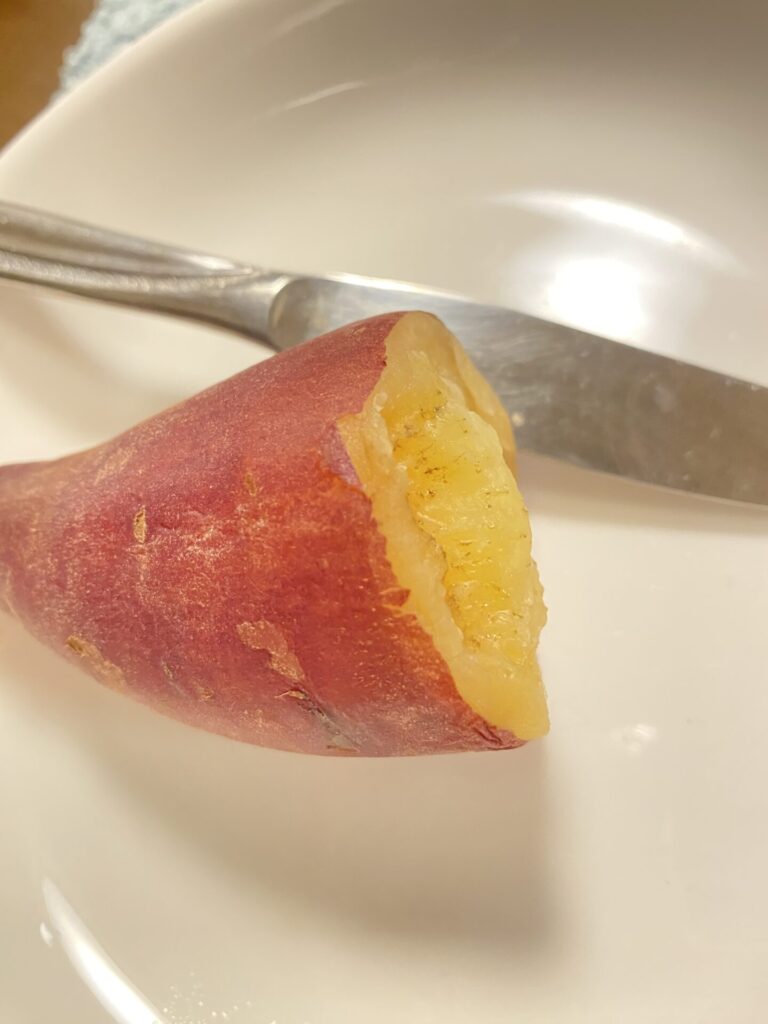Introduction
The dietary habits of the Japanese people are diverse, forming a unique food culture that blends tradition and modernity. Today I would like to use my own diet to show you how we usually eat, with a particular focus on health-conscious food choices.
What is autophagy?
Autophagy is the process by which cells break down unwanted or old parts and make new cellular components when they are hungry. This mechanism has been studied in detail by Japanese scientists and has been awarded a Nobel Prize. Its implications for health and longevity have attracted considerable attention.
Why skip breakfast?
I usually skip breakfast to boost autophagy. I don’t eat for 12 hours after eating at night and I believe this fasting is effective in rejuvenating my cells.
Today’s special breakfast



However, today I made an exception and had sweet potato ‘Naruto Kintoki’ for breakfast as I was going to the gym in the morning to work out. It is sweet, nutritious, high in fibre and a great energy booster. My diet is designed to keep cholesterol levels low and oil content low.
Gym workout

After breakfast, downtown Sakae, which I usually only see at night, looks refreshed in the sunshine. We worked out in a gym in this Sakae. Exercise is essential for staying fit and healthy, especially in the fresh morning air, which refreshes the body and mind.
Afternoon coffee: New Green Tea Roll Cake

During the workout, I was not hungry because I was drinking sweet dextrin, so I skipped lunch. After my workout, I tried the new rice flour matcha roll cake at Starbucks. Strangely, it smelled like boiled mackerel, which may have been influenced by my previous surgery to cut the mucous membranes of my nose. However, when I concentrated, I could still taste a slight matcha flavour in the back of my nose. This has never happened to me before. I usually find Starbucks snacks delicious, but this time I didn’t find them so tasty.
Dinner and its choices





For dinner we made sesame soup with chicken, oysters and lots of vegetables. The vegetables are boiled for an hour so that they can absorb more phytochemicals from the plants. As an alternative to sweets, sweet potatoes are chosen to combine sweetness and health.
Natto senbei as a snack
Natto on rice crackers. Natto is the food of choice for improving the balance of intestinal bacteria. Natto is an essential healthy food in Japanese food culture and is deeply rooted in my diet.
Conclusion
Throughout this day, I hope to have shared with you the importance of making health-conscious food choices.
I hope I have shared with you the importance of making healthy food choices. Japan has a very rich food culture, with a wide variety of ingredients and dietary practices to support it. Our diet emphasises not only health, but also the pleasure of taste. An autophagy-aware diet, food choices that consider cholesterol levels, and the inclusion of phytochemicals and gut-healthy foods may be the secret to a long and healthy life.
I hope this article will be a useful resource for anyone interested in health and nutrition.



コメント